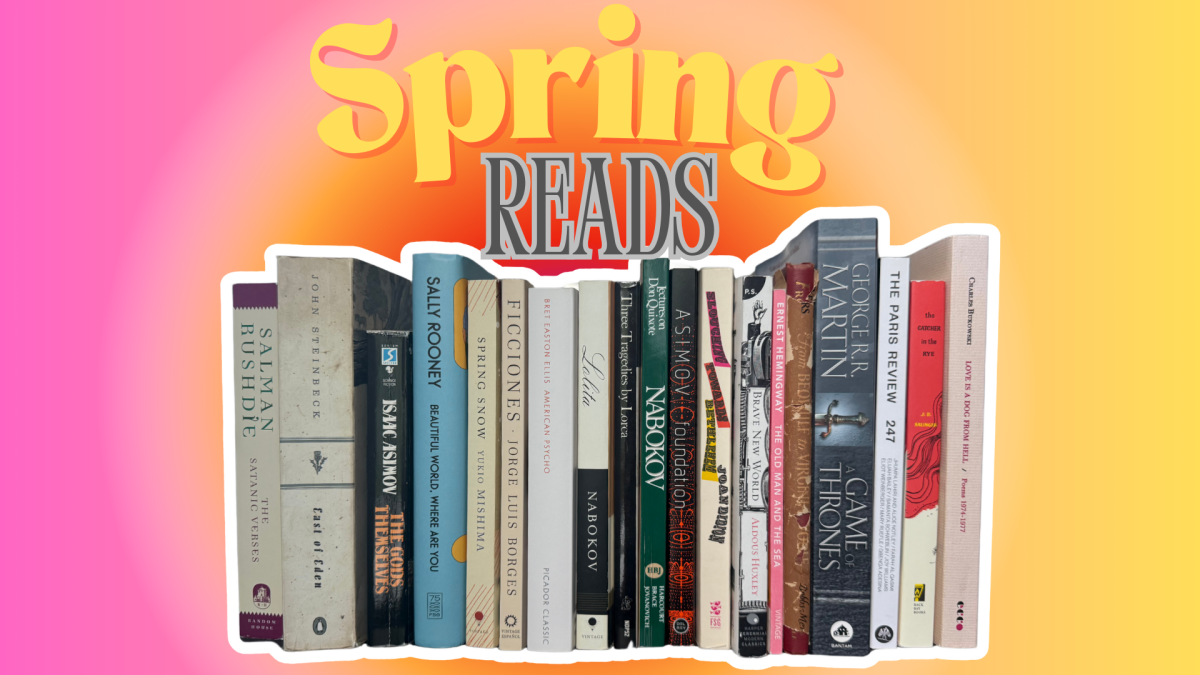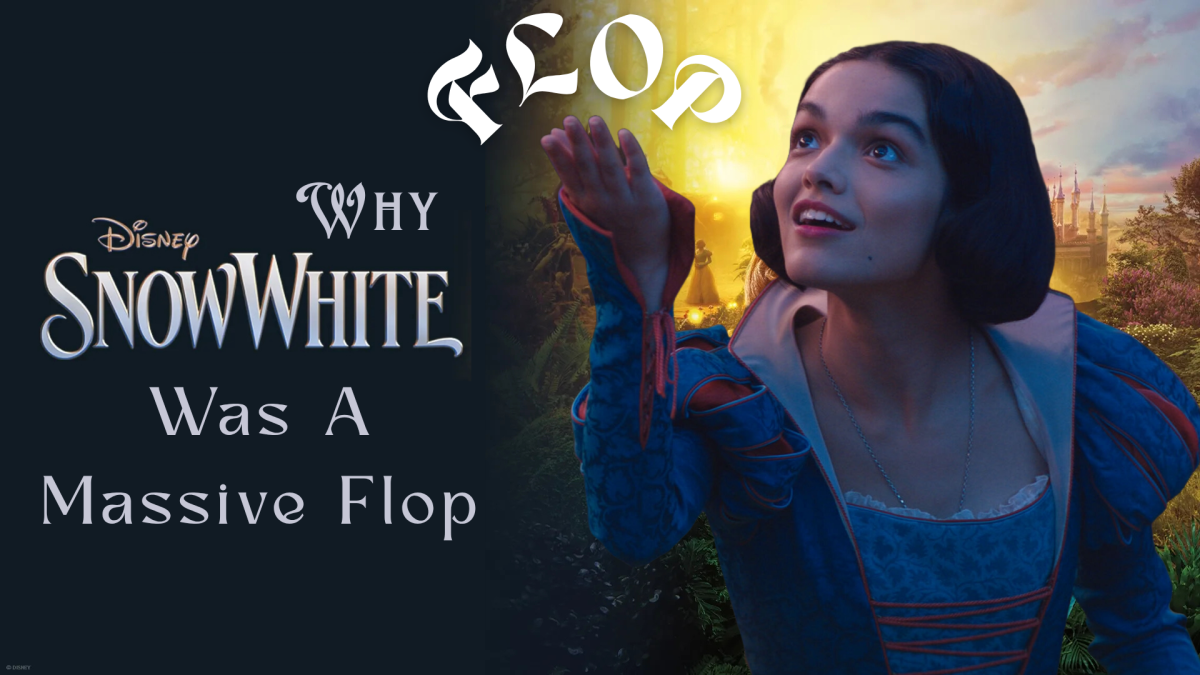The sun shines a little warmer, the day stretches out for a little longer, and green slowly sweeps back into the grass–Spring has reached Houston, Texas. Students at The Village School tiredly return home after another successful Spring Break, preparing themselves for the last stretch of hard work before the Summer arrives. Winter is long forgotten, its icy tentacles held hostage for the next nine months. What is not forgotten, though, are the millions of New Year’s resolutions tossed to the side only three months into 2025. Working out more, eating healthier, studying more, being a better friend, and reading more are among the most common New Year’s resolutions every year; the latter one proving to be hard to achieve. Most people genuinely want to read more, and better themselves from the inside out. Reading is a habit, and like all habits, it requires discipline; therefore, starting off with a good book is essential. Here are six books to help The Village School’s Vikings get back on track on their New Year’s resolutions in Spring 2025.
1- “Siddhartha” by Hermann Hesse
“Siddhartha” is a short novel published in 1922 which follows the journey of a prince’s path toward Enlightenment. Throughout his journey, the prince is challenged by desire, pride and wealth, but ultimately realizes that he finds such concepts unsatisfactory and must find enlightenment alone. Hesse’s portrayal of spirituality’s connection with nature makes this a perfect book for spring. “Siddhartha” mirrors spring’s transformation and constant renewal through the protagonist’s path toward self-discovery. Beautiful lyrical prose and note-worthy reflections invite readers to take a break from the chaos of life and appreciate their surroundings, something a lot of Village Vikings could find beneficial amidst the stress of IB courses.
2 – “Love is a Mixtape” by Rob Sheffield.
“Love is a Mixtape” embodies the nostalgia that comes with change. This memoir reflects on loss and the possibility of endless love through music. Sheffield’s deep connection to music as one of Rolling Stones contributor editors, resonates deeply with readers. Before every chapter, Sheffield includes a mixtape of songs he believes encapsulate that specific moment of his life. Sheffield’s storytelling is complex, from showing how music nerds experienced the transition from cassettes, to CDs, Walkmans, and MP3s, to vulnerably sharing what it was like to lose his wife at a young age, he captivates readers’ attention and gains their empathy. His book emphasizes the ways music mirrors heartbreak, happiness, and everything in between. Spring, a season that oftentimes feels like a complete life reset, is the perfect time to explore how life, like a mixtape, is made up of small moments that all add up to one meaningful life.
3 – “Spring Snow” by Yukio Mishima
As its title suggests, “Spring Snow” captures the essence of unexpected, yet pleasurable, change. This is the first installment of Mishima’s tetralogy, “The Sea of Fertility,” a poetic exploration of youth, love, desire and the fleeting nature of beauty. The protagonist, Kiyoaki Matsugae, struggles as he navigates a changing Japan. Coming from a rising family, Matsugae deals with an undestined love for the heiress of a declining aristocratic family. The book was written in 20th-century Japan when the country was going through controversial changes politically (the Meiji restoration,) and emphasizes the impermanence of life. This delicate novel makes the perfect companion for a quiet, warm afternoon outside.
4 – “East of Eden” by John Steinbeck
Steinbeck’s masterpiece is full of emotion and promise of new beginnings. This is a classic retelling of Abel and Cain–the constant battle between good and evil. The story is set in California in the late 18th century and is full of imagery of barren lands turned into fortunes. Steinbeck brings forward the issue of generational trauma while posing the question of whether human nature is inherently good or evil. “East of Eden” features Cathy, one of fiction’s most beloved villains. As her astute, cunning character develops and readers learn her complexities and flaws, it becomes impossible to not question if humans are born or made evil. The narrator’s beautiful descriptors of the landscape transport readers deep into the valleys of California, making this a wonderful book to pick up anytime.
5 – “The Gods Themselves” by Isaac Asimov
“The Gods Themselves” is a novel by one of Sci-Fi’s greatest minds, Isaac Asimov. Asimov’s fiction is incomparable; he writes outside the scope of what fiction is expected to be. His expertise in physics and literature combine to create art that is bound to leave readers speechless. Although he is most notably known for his “Foundation” trilogy or “I, Robot,” Asimov has remarkable series and short story collections as good, if not better, than his masterpieces. This novel in particular, winner of a Hugo Award in 1973, is divided in three parts: “Against Stupidity,” “The Gods Themselves,” and “Contend in Vain” (A quote from Friedrich Schiller’s play “The Maid of Orleans:” “Against stupidity the gods themselves contend in vain.”) All the parts tackle the issue of a new clean, limitless energy exchange between a futuristic Earth and a parallel universe (the “para-universe,”) which is silently killing the Earth’s Sun. The novel deals with the theme of individual sacrifice vs communal sacrifice, each part focusing on how different individuals and communities (A scientist in futuristic Earth, a rebellious alien in the “para-universe,” and a human living on the moon) deal with the threat. This book is extremely catchy and interesting, definitely a must-read for readers into Sci-Fi, but overall a worthwhile read for any reader who wants something easy to pick up, despite some of Asimov’s physics jargon.
6 – “Beautiful World, Where Are You?” By Sally Rooney
Social media in the last couple of years has made Sally Rooney into one of the most-read modern authors. Her best-selling novel, “Normal People,” captured the hearts of many readers during the pandemic due to her real, flawed characterization of modern lovers. “Beautiful People, Where Are You?” Follows the same witty narration style over the lives of funny, selfish and awfully bad communicators Alice and Eileen. Chapters alternate between both friends, keeping readers engaged through their bad casual dating experiences and friendship. The plot is structured around emails the women send to each other every couple of weeks, updating each other on their professional and personal lives. Interestingly enough, “Beautiful World, Where Are You?” Is also a quote from Friedrich Schiller, this time from a poem titled “The Gods of Greece.” All in all, Rooney’s twisted, and at times cringy, humor is definitely something readers should indulge in for an experimental spring.
If these recommendations are falling a bit short, check out this article about reading slumps and learn how to defeat them. Reading is not always an easy practice, but it is one of the most rewarding hobbies for anyone willing to give it a chance.








